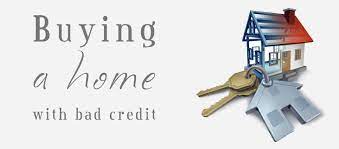Owning a rental property can provide a slew of cash benefits including rental property tax breaks. When the property is rented, it generates a consistent stream of cash. Deductions for costs like insurance, property taxes, and property maintenance can reduce the tax owing on rental income. And because real estate tends to appreciate in value, you may be able to sell it for a profit.
Another advantage is depreciation, which reduces the investor’s tax payment over the life of the property. Depreciation is frequently used by investors to maximize their profits on any given piece of property while minimizing out-of-pocket expenses. These tax advantages may play a significant role in your investment decision. Let’s see how to calculate rental property depreciation in this post.
What Is Depreciation?
Depreciation is the process of deducting the cost of purchasing or renovating the rental property. Depreciation spreads those costs throughout the property’s useful life.
Assume you purchase a rental property. Rather than taking a substantial tax deduction in the year, you purchased the property, you would take a portion of the cost of the structure as a lesser depreciation deduction each year.
You may have heard the term “depreciation” used to describe the decrease in value that occurs as a piece of property wears and tears. This is not entirely correct. Depreciation is the process of dispersing the expense of property rather than determining its value. Even if your rental property is in excellent condition, it will depreciate.
What is Rental Property Depreciation?
The IRS estimates that a residential rental property has a useful life of 27.5 years in 2020. During that time, the property wears out – or depreciates – at least for tax purposes.
If you are a real estate investor, you can deduct 3.636 percent of the property’s cost basis from your annual income to minimize the amount of income due to tax.
Depreciating enhancements
You do not just deduct the cost of purchasing a rental property. Money spent to renovate the property is also devalued. Anything that increases the value or usefulness of a property restores it to new or like-new condition, or adapts it to new use is considered an improvement.
The number of possible enhancements is limitless, but common enhancements include:
- Adding extra rooms or garages.
- Putting in new systems, such as heating and cooling.
- Roof replacement.
- Putting on wall-to-wall carpeting.
- Adding accessibility features such as a wheelchair ramp.
Routine maintenance and repairs are not considered improvements. Maintenance costs are deducted as expenses in the year that the money is spent. For example, applying tar to a roof is considered maintenance, whereas replacing a full roof is depreciation.
How long does it last?
Depreciation deductions begin not when the property is purchased, but when it is used to generate rental income. This is referred to as “placing the property in service” by the IRS.
Depreciation will continue until one of two things occurs:
- You have deducted the entirety of your “cost basis” in the property. In most circumstances, your cost basis is the amount you paid to acquire the property, including any taxes and fees paid at settlement, as well as any modifications made to the property.
- You deactivate the property, which means you no longer use it to earn income. This could be because you sold the property or just decided to discontinue renting it.
Rental Property Depreciation Rules
However, not all rental property components can be depreciated.
For example, because the value of the land or lot does not decline, it cannot be depreciated. Routine operating expenses including property management fees, routine maintenance, and property tax are also not depreciated. They are instead deducted from gross rental income in the year in which they occur.
Several conditions are mentioned in IRS Publication 527 that must be met in order to depreciate rental property:
- You must be the owner of the property.
- Property must provide money, usually through tenants.
- The property’s useful life must be determinable, which is why land cannot be depreciated because it is never used up.
- The property must have a useful life of at least one year.
Because the property has been kept for less than a year, real estate investors who fix and flip cannot depreciate it. Wholesalers are also unable to claim a depreciation deduction because they never actually own the real estate they are selling
How to Calculate Rental Property Depreciation
You can calculate rental property depreciation in three steps: identifying your cost basis, dividing by the usable life of the property under your selected depreciation scheme, and computing a depreciation schedule.
#1. Establish Your Cost Basis
Your cost basis (the initial value from which you’ll calculate all future depreciation) is determined by the value of your rental property plus certain eligible closing costs.
If you are purchasing the property as an investment, the property value is most likely the purchase price. If the property is being converted to a rental after you’ve lived there for a time, getting a professional real estate appraisal may be your best chance.
Because the value of land is not included in computing the cost basis of a property, you should only consider the value of the house for tax reasons.
Read Also: 3 Huge Factors to Consider Before Investing in a Rental Property
Certain eligible closing costs can be added to the property value. These are some examples:
- Property taxes: If you agree to pay the seller’s real estate taxes, you can include them to your cost basis as long as you don’t deduct them as local taxes paid elsewhere on your tax return.
- Abstract fees: As part of the title work, a description of the property is written up.
- Charges for installing utility services such as gas, electricity, and water.
- Fees for recording transactions: A record of the transaction is kept with your local authorities. This comes at a cost.
- Transfer taxes: A transfer tax is often determined as a percentage of the sales price received by local governments when a property is transferred.
- Legal fees: In some areas, an attorney must be present during the closing. You may desire to have an attorney there even if they are not required.
- Surveys: To determine property lines, a survey may be required.
- Title insurance: If you are applying for a mortgage, your lender will require you to purchase a lender’s title coverage. An owner’s title coverage will protect you if someone discovers a valid interest in your property that was not discovered before you closed.
- Any other debts that you pledged to pay: These could be repaid interest or real estate commissions.
If you pay $6,000 in acceptable closing costs and acquire an investment property for $200,000, your total cost basis is $206,000.
#2. Divide by the useful life of the property
To calculate the annual amount of depreciation on a rental property, divide the cost base by the useful life of the property.
So, let’s take our existing cost foundation of $206,000 and split it by the GDS life lifetime of 27.5 years. It turns out to be $7,490.91 each year, or 3.6 percent of the loan amount.
#3. Calculate The Rental Property Depreciation Schedule
It would be lovely if everything was as straightforward as that. Unfortunately, it isn’t. The reason for this is that you may only claim depreciation for the first year you own the property for as long as it is in service. As a result, if you begin renting the property in May, you must pretend that you began renting in the middle of the month.
The IRS provides tables towards the end of Publication 946. Use the second chart in Appendix A to figure out which table gives you the percentage of depreciation to take in the first year. Because we’re employing GDS on residential rental property with a mid-month service assumption beginning in May, you can claim 2.273 percent depreciation in the first year.
Depreciation of residential rental property example
The formula for calculating depreciation on a residential rental property is simple:
The purchase price – land value = building value.
Annual permitted depreciation = building value / 27.5 years
As an example, consider our $150,000 single-family rental home. The lot’s land value is $20,000, and we spent $5,000 on capital upgrades at the time of acquisition. So, our annual depreciation expense would be as follows:
$150,000 purchase price – $20,000 in land value = $130,000 building value + $5,000 in renovations.
Annual permitted depreciation = $135,000 ($130,000 building value + $5,000 renovations)/ 27.5 years = $4,909 in annual depreciation expense.
How Depreciation Reduces Taxable Net income From a Rental Property
Let’s take a quick look at the significant advantage that depreciation expenditure offers real estate investors. Depreciation is a non-cash deduction based on the assumption that a residence wears out or depreciates over a period of 27.5 years.
If our single-family rental generates annual gross rent of $18,000 and our total operational expenses – which include things like property management, routine maintenance and repairs, interest expense, and property tax – account for 50% of our gross income, our annual net income is $9,000. However, because of the depreciation benefit, our taxable income is less than half of that:
Before depreciation, $18,000 total annual income – $9,000 operational expenses = $9,000
$9,000 – $4,909 in non-cash depreciation expense = $4,091 in taxable income.
So, in this case, even though we still have $9,000 in cash profit, we only have to pay taxes on less than half of the actual cash we got. If you’re in the 32 percent tax bracket, you’ve likely just saved $1,571 in federal taxes due to the depreciation expense on your single-family rental property.
What is partial year depreciation of a rental property?
We used a full year of depreciation in the preceding example. But what if you purchase your rental property in the midst of the year? Fortunately, no guesswork is required because the IRS has already provided an answer.
The IRS chart below compares the month the property was placed in operation to the percentage of cost basis that can be depreciated:
| Month put into service | Cost basis depreciation percentage |
| January | 3.485% |
| February | 3.182% |
| March | 2.879% |
| April | 2.576% |
| May | 2.273% |
| June | 1.970% |
| July | 1.667% |
| August | 1.364% |
| September | 1.061% |
| October | 0.758% |
| November | 0.455% |
| December | 0.152% |
What is the Duration of Depreciation?
Depreciation does not last indefinitely. Depreciation might end in two ways for the present property owner:
- After 27.5 years, the entire cost basis has been subtracted.
- Property is taken out of service by selling it or ceasing to generate money.
The depreciation clock is ‘reset’ when a property changes hands. So, even if you’ve held a property for five years and consumed around 18% of the total depreciation, a new owner can restart the depreciation cycle of 27.5 years.
One of the numerous reasons why 1031 tax-deferred trades are so popular among real estate investors is this. In addition to postponing any capital gains taxes, you can invest in a resale property that is several years old and still deduct 100% of the depreciation expense to lower taxable net income.
Reclaiming Depreciation When You Sell a Rental Property
Resetting the depreciation clock is convenient for buyers, but what happens to the depreciation you’ve expensed and profited from as the seller?
The IRS ‘recaptures’ your depreciation when you sell your property. Every year that you take a depreciation expenditure, your cost base decreases, and your potential capital gain when you sell increases.
For example, after five years, our $120,000 house’s cost basis (excluding land value) is reduced by $24,545 ($4,909 annual depreciation expense x 5 years) for a current cost basis of $95,455. In effect, the $24,545 in depreciation expense you used to lower your taxable income during the previous five years is now subject to capital gains tax.
However, by using a 1031 tax-deferred exchange to sell one investment property and acquire another, you can postpone paying taxes on depreciation and capital gains.
What Is the Duration of Depreciation?
The recovery period is the time frame in which property owners may deduct depreciation. The cost basis, including any revisions, is depleted at the end of the recovery period. However, keep in mind that property owners who invest in ongoing improvements have the ability to change their cost basis over time.
What Happens if I Don’t Write off a Rental Property’s Depreciation?
It can be simple for a rookie real estate investor to forget about this tax break, especially if you prepare your own returns. Fortunately, you can claim your depreciation benefit on your most recent tax return after the fact.
Rental Property Depreciation FAQs
How depreciation is calculated on rental property?
To calculate rental property depreciation, you must first determine the cost basis, which is the value of the property less the land plus qualifying closing costs. According to the depreciation method utilized, this is split by the useful life of the property.
Should I depreciate my rental property?
In summary, you are not compelled by law to depreciate rental property. Choosing not to depreciate rental property, on the other hand, is a huge financial blunder. It’s the same as throwing a percentage of your rental property revenues away.
What happens if you forget to take depreciation?
If you fail to depreciate an asset, the IRS considers this to be the use of an improper accounting method, which may only be addressed by filing Form 3115.






